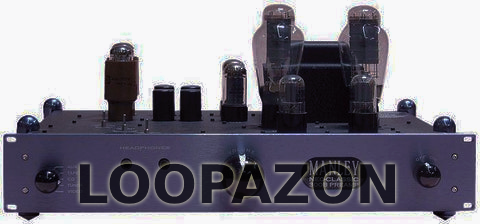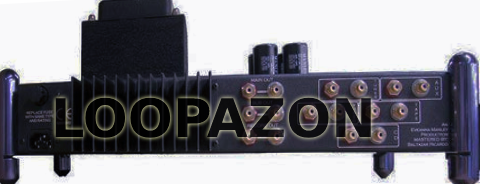Manley Neo-Classic 300B RC Preamplifier with Remote Control
Form a band online, promote your music, buy custom beats, sound parts, and share your Beat or Track as a Royalty Free loop with us. Collaborate to make beats online with the best loop makers from around the world on the Forum for musicians and beat makers. Keep up to date with Music News and learn from FL Studio Video Tutorials and the articles on the Blog. Free DAW Music Software downloads, VST and Instrument Packs for FL Studio, Pro Tools, Logic, Ableton, and how to use the most popular free DAW Software, Fruity Loop Plugins, MIDIs and more.
Manley Neo-Classic 300B RC Preamplifier with Remote Control
The 300B Preamplifier is Manley's most obscure product. The Neo-Classic 300B Preamplifier RC was handcrafted in Chino, California, and has great-sounding components in a creative and clear signal routing. So it is the first and only time these vintage tubes have been used in a preamp. For many years, Manley has been using the 300B into modest power amplifiers, and the admirable thing about the 300B is the tube's smooth, natural tone. A single 300B, on the other hand, offers genuinely suitable power and voltage swing for headphones. It also serves as a fantastic line driver. This is where the impedances aren't too low, and the power needs aren't too high, which is excellent for a single-ended tube of this type.
For the input stage, Manley blends the vintage 300B with another classic, the massive octal-based 6SL7GT-all triodes operating in true Class A mode. Manley has used vacuum tube rectification and control in the power supply. They have added much capacity in order to supplement the vintage vibe. Manley also added an extra and unique ripple rejection circuit to remove the noise in the power supply, resulting in a very low-noise preamplifier, which is very important for people using headphones.

The Neo-Classic 300B preamplifier blends the legendary 300B tube with the big octal-based Sovtek 6SL7GT for the input stage. Every triodes runs in pure Class A mode. To cut the noise in the power supply, Ruby 5AR4C tube rectification, Raytheon JAN OD3 tube regulation, and a ripple rejection circuit is used. The input impedance is lesser than the Jumbo Shrimp when kept at 100k Ohm. But the output impedance is greater than the Jumbo Shrimp at 100 Ohms.
The Neo-Classic 300B is not only a headphone amplifier but also a line-level preamp. The headphone part is very impressive and is powered by an identical pair of 300Bs. There are two headphone jack inputs and a toggle switch on top of the machine that allows you to choose between a 30-400 Ohms or a 300-4000 Ohms headphone impedance output. It has a very wide, clear sound that is simple to listen and the sound is incredibly accurate and realistic, which may be described as organic.

Features of the Manley Neo-Classic RC Preamplifier with Remote Control
-
INPUT SELECT- The Input selection is switched to 5 positions. Electrically, each input is identical. This switch is immediately followed by the RECORD OUT. If the recording is not done, the interconnect cables must be unplugged from the RECORD OUT since there is no buffer amp to separate the effects of loading and cable capacitance.
-
HEADPHONE JACKS -The headphone jacks are standard1/4" stereo. The HEADPHONE IMPEDANCE SWITCH should be set to the appropriate range for the headphones. The real headphone impedance determines the maximum power output. The preamp will convert 1 watt (10 volts RMS) into 100 ohms and 1 watt (25 volts RMS) into 600 ohms25 volts RMS) into 600 ohms as the output. These outputs are transformer linked for maximum protection from current shock, shortage of cable, and other potential issues.
-
VOLUME - The volume is featured with an Audiophile-grade motorized ALPS potentiometer. The remote can be used to control the volume.
-
BACK-LIT PANEL -The BACK-LIT PANELindicated the power. The unit is turned on when it is lighted up, and it is off if it is not lightened.
-
POWER SWITCH - Since the tubes take a while to warm up, firstly around 10 seconds, there is stillness, and then there is a different sound produced, after which it becomes normal. It is better to switch on the CD to power up the system and then turn on the preamp and finally the amplifiers for good sound. After waiting for a minute or two, start playing music. Everything will warm up as a result of following this process. After an hour or two, some individuals might experience a difference, depending on the equipment. When powering down, the order is changed: the power amps come first. This is a wonderful habit since it puts the least amount of strain on the speakers and ears. As the preamp's power supply is tube-based, this procedure would benefit the slow start to speed up.
Switch on
On the right side of the front panel, you'll find the power knob. The preamp may be turned on or off by turning the knob to the right or left. It is not advisable to turn the knob left or right in a rapid motion. A lengthy garolite 1/4" rod shaft links the faceplate knob to the real switch in the rear of the unit. This is present in the knob and on the input selector. The small screws on the shaft-to-switch coupler will become loose if the knob starts spinning around in circles. If this arises, the unit must be unplugged, then remove the bottom cover, and use a 1/6" hex key to tighten the four coupler screws. Thus, the issue gets solved.
Running
It's
not is not ideal to leave your preamplifier turned on all the time.
This is a waste of power as well as tube life. The preamplifier
features both tube and solid-state rectification, and it takes around
30 minutes to achieve peak functioning condition. Like how running is
beneficial to the musculoskeletal and cardiovascular health, there is
a certain period of time that the preamplifier should run to be in
good condition.
Tube Life
The quality of these tubes, like all tubes, declines over time. This is due to cathode emission, which occurs naturally in all tubes. Depending on usage, it is good to have your preamplifier tested every 4-5 years. The need to replace the 6SL7 input tubes might be indicated by an extreme rise in noise level. Generally, the 300B's are known to endure an extremely long period.
Headphones
There
is a switch on the top of the preamp, and you may select the right
impedance for your headphones. When using headphones, it is
recommended to pick the "Transformer" output rather than
the "Direct" output because the transformers are favorite
headphones over the direct output.
Features of the Remote Remora Control
-
For optimal signal selectivity, flexibility, and system range, the remote transmitter and receiver are controlled by a crystal-clocked microcontroller.
-
The user can reconfigure the user-number component of the serial ID data stream from the distant system. This eliminates the risk of unintended behavior caused by remote command clashes.
-
When the transmitter is in operation, a multi-color LED indicates battery status and two-digit user-number programming status when it is in program mode.
-
Internal antennas assist in a streamlined design look and prevent the risk of harm if exposed to the elements while still offering enough range.
-
The transmitter is powered by a 9V battery that is widely available.
-
For durability, the transmitter shell is composed of strong Lexan®.
-
For years of consistent operation, real compression-dome push buttons are employed rather than short-lived conductive silicone membrane pads.
-
For the essential audio channel, a high-quality motorized attenuator is used, with excellent inter-channel matching.
-
When the button is held for half a second, the attenuator motor starts to run at a slower pace, and after a few seconds, it rotates at double speed.
-
The keep-alive period on the remote transmitter keeps the Remora Remote awake for a few seconds AFTER either button is released, as shown by the LED bulb flickering DIM green or red.
-
The backup battery is unnecessary as the transmitter and receiver-CPUs decoder includes flash memory.
-
As a result of the clever system architecture and user-programming method, dip-switches are no longer required.
-
The Remora Remote uses relatively little power, resulting in long battery life.
-
The preamplifier's audio route has less noise because of its electrically quiet operation.
FAQ
No FAQ found
